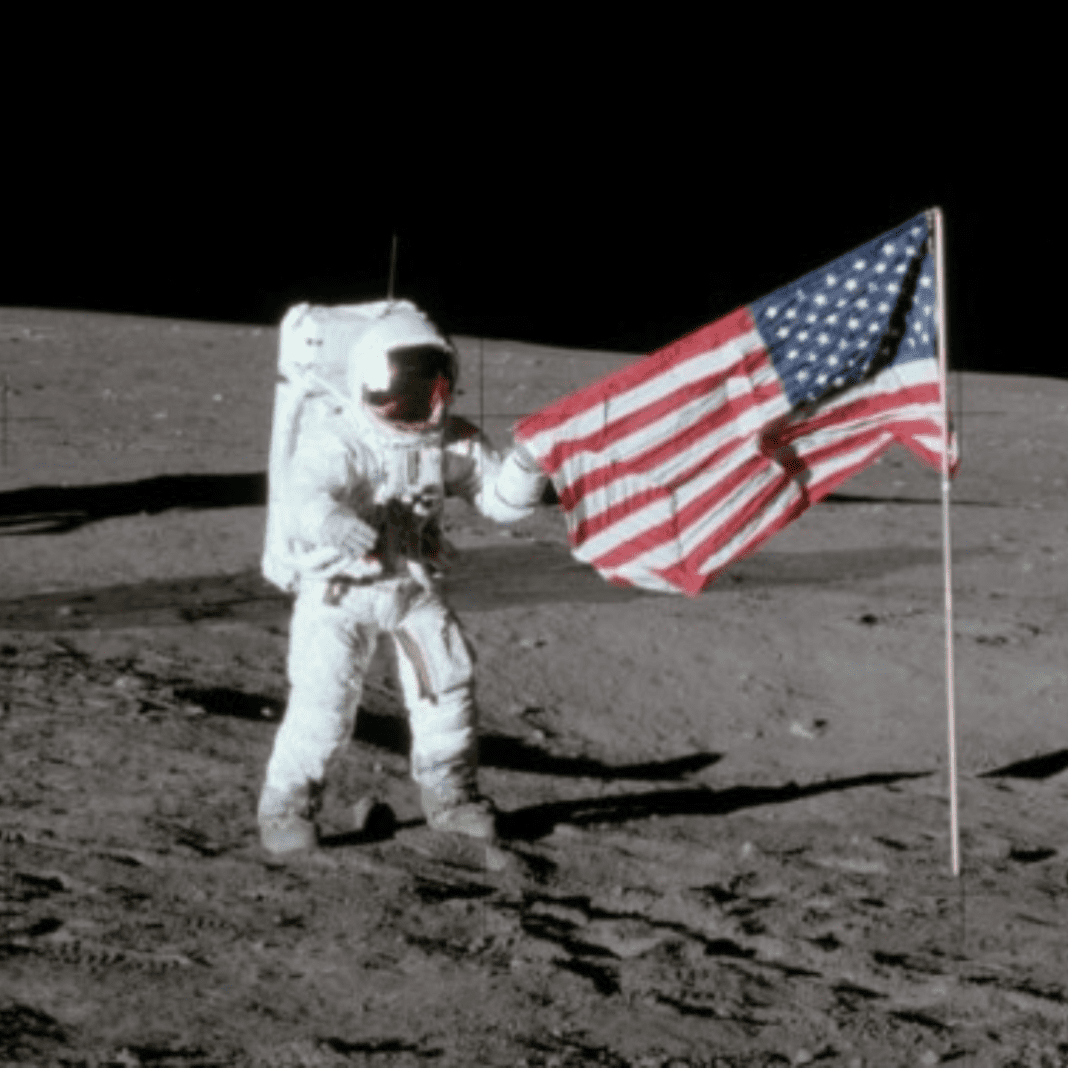A Giant Leap for Mankind
Fifty-five years ago, on July 20, 1969, millions of people around the world were glued to their television screens. Everyone was excited and nervous as two brave astronauts from Apollo 11 prepared to set foot on an uncharted world—the Moon. Over 380,000 kilometers away from Earth, the Apollo 11 lunar lander named “Eagle” began its descent to the Moon’s surface. Minutes later, a historic message was heard: “On Tranquillity Base, the Eagle has landed.”
This marked the moment humanity reached the Moon. After descending the ladder and landing on the lunar surface, astronauts Neil Armstrong and Buzz Aldrin created history. Armstrong uttered the iconic words, “That’s one small step for man, one giant leap for mankind,” as soon as he stepped onto the lunar surface. Over the following three hours, the two astronauts collected samples, explored the Sea of Tranquillity, the landing site of Apollo 11, and enjoyed the sunlight on the powdery terrain. They also proudly planted an American flag on the Moon’s surface.
The Mystery of the Moon Flag
The act of placing the flag on the moon gave rise to certain debates and riddles. Many were perplexed as to why the American flag seemed to be flying on the airless Moon. Some even doubted that the Moon landing ever happened in the Apollo 11 mission. But there was a scientific explanation behind it.
NASA engineers faced a unique challenge: how to make a flag stand and look like it was waving in a place with no wind. This task was given to Jack Kinzler, the chief of technical services at NASA’s Manned Spacecraft Center. Kinzler and his team came up with a smart solution. At the top of their flagpole, they erected a horizontal crossbar. The flag was attached to this crossbar and had a hemmed edge to create a sleeve. This design allowed the flag to be extended outward, making it look like it was flying, even without any wind.
The flagpole was made of lightweight and durable anodized aluminum tubing, which could withstand extreme temperatures. The flag itself was made from nylon fabric, chosen because it could endure the harsh lunar environment and intense sunlight. To ensure the flag stood upright in the Moon’s lower gravity, Kinzler’s team added a small spring catch that clicked into place when the astronauts raised the flagpole. This mechanism kept the flag from drooping or falling over once it was planted.
The complete flag assembly was small and light, measuring only 3 inches in diameter and 36 inches in length when it was placed inside a protective tube. This made it easy to store on the lunar module without taking up much space or adding significant weight.
An Iconic Image
Kinzler’s innovative design not only solved the problem of displaying a flag on the Moon but also created an iconic image that symbolized one of humanity’s greatest achievements. The image of the American flag triumphantly flying over the lunar surface came to symbolize both the accomplishment of the Apollo 11 mission and the end of the space race between the US and the USSR.
This flag’s design was so successful that it was used in further Apollo flights. Using Kinzler’s brilliant approach, an American flag was planted at each lunar landing. This tradition continued, making the American flag on the Moon an enduring symbol of human exploration and achievement.
The astronauts also conducted experiments and took photographs, capturing stunning images of the desolate yet fascinating lunar landscape. These images were beamed back to Earth, allowing people everywhere to share in the wonder and excitement of the mission.
As we celebrate the 55th anniversary of the Apollo 11 landing, we remember the bravery, ingenuity, and determination that made this historic event possible. The Apollo 11 mission not only proved that humans could travel to the Moon and return safely but also inspired generations to dream big and reach for the stars. The legacy of Apollo 11 continues to influence space exploration today, reminding us of what we can achieve when we dare to push the boundaries of what is possible.
The Apollo 11’s Moon landing was a testament to human curiosity and the relentless pursuit of knowledge. It showed us that with hard work, teamwork, and innovative thinking, we could accomplish the extraordinary. As we look back on this incredible achievement, we honor the spirit of exploration that drives us to seek new horizons and explore the unknown.




